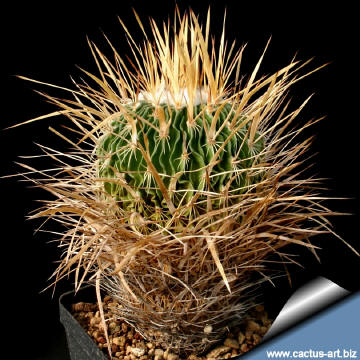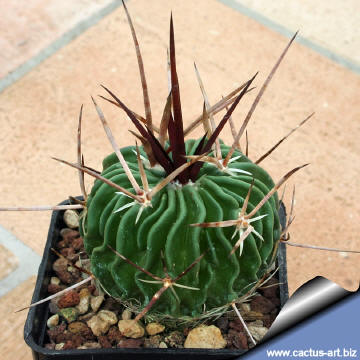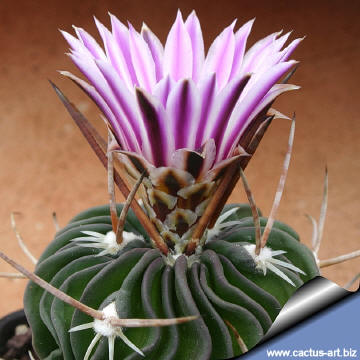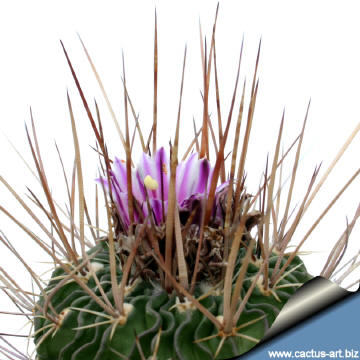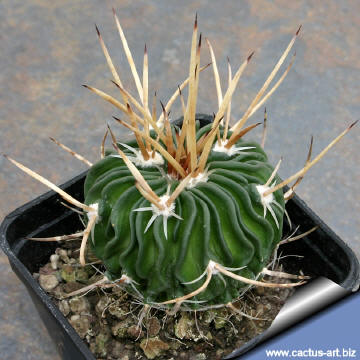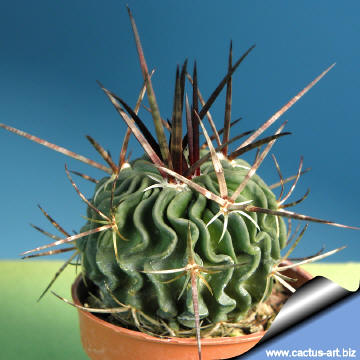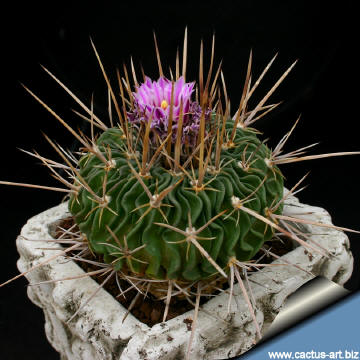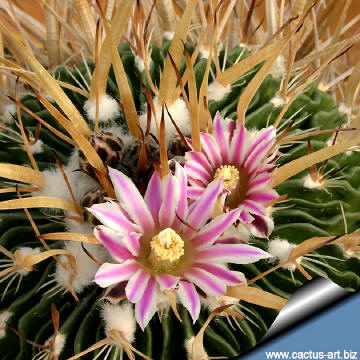-
x
Descrizione
Cactus con fusto solitaro e lunghe spine appuntitite, le piante in coltivazione sono piuttosto variabili. Family: Cactaceae (Cactus Family) Scientific name: Echinofossulocactus hastatus (Hopffer ex K. Schumann) Britton et Rose 1922 (status doubtful) Origin: Mexico, Hidalgo (North of Puchuca) Tribe: Cacteae Subtribe: Echinocactinae
| |
| Description: Solitary cactus with long sharp spines. The plants in cultivation are quite variable. | |
Cultivation: Small growing and easy to to care in normal and very drained cactus compost and very willing to flower, Because of it’s small size makes a great potted plant specimen, great for beginning collectors, water sparingly and allow to dry between watering, needs good drainage. Watering should be curtailed during the winter months. Full sun but is tolerant and prefers light shade during the hot Summer months. And provide very good ventilation. Frost Tolerance: Hardy to - 5°C if kept dry. Propagation: Seeds (usually) or by the shoots of adult plants (if available). It tillers more readily than most other species. | |

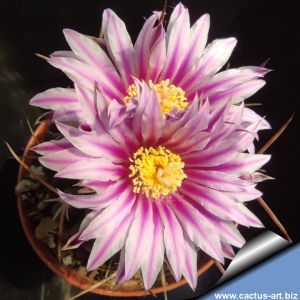
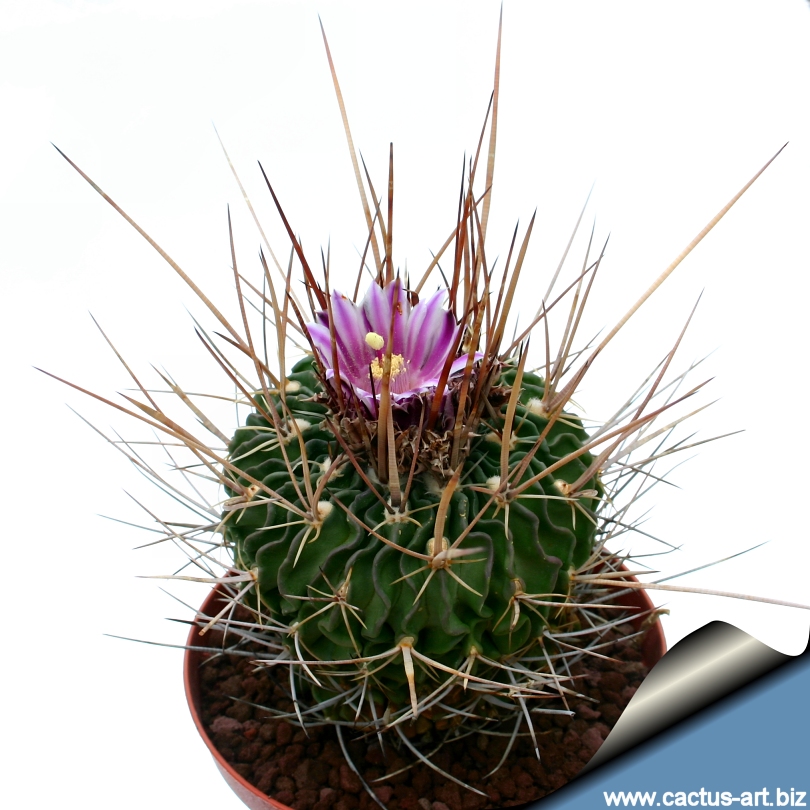 Echinofossulocactus (lamellosus) hastatus
Echinofossulocactus (lamellosus) hastatus 